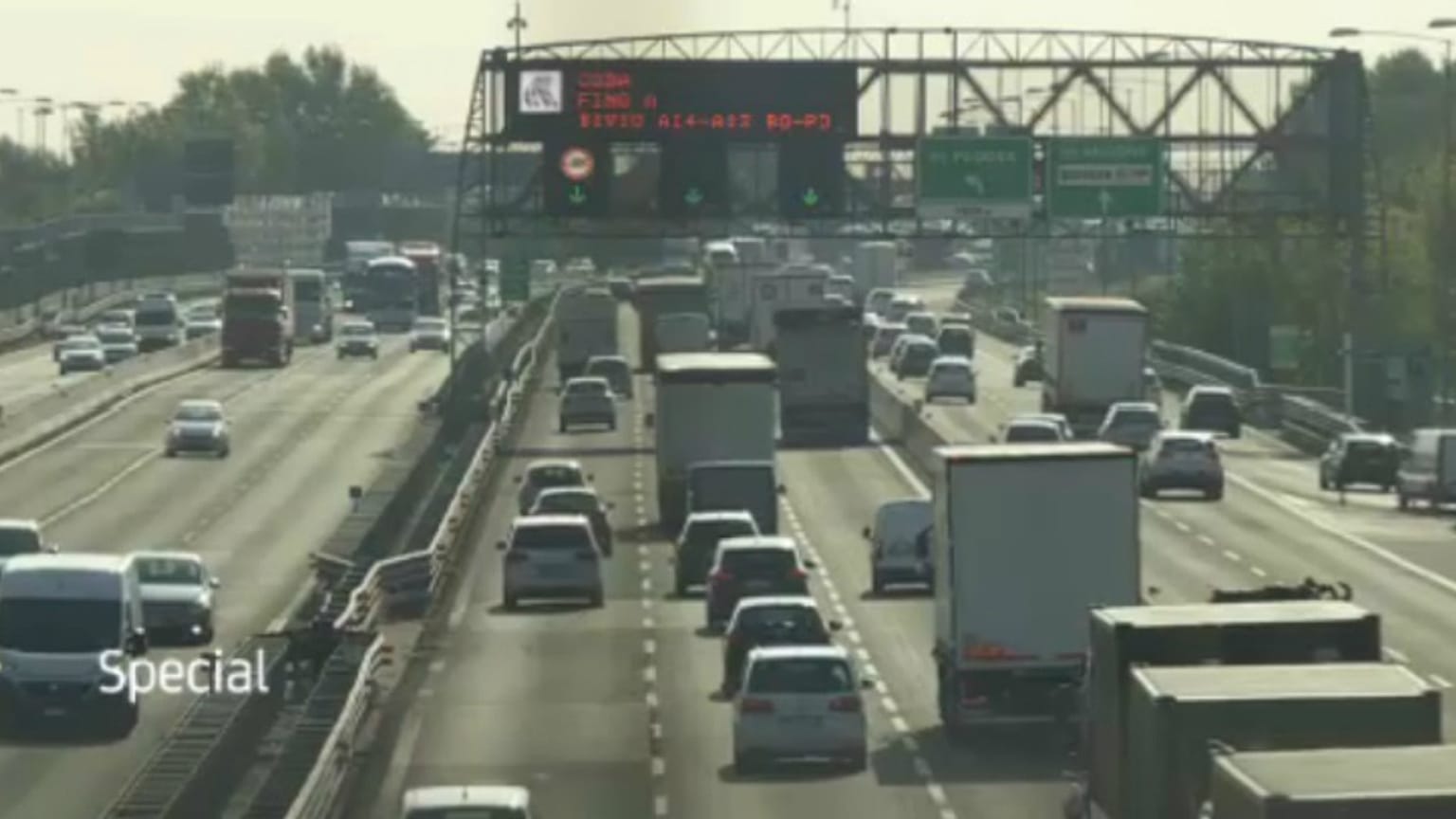A cash cow for investors but too often a choked nightmare for users...and potentially dangerous warn critics after the Bologna bridge tragedy.
The Genoa bridge collapse has put European infrastructure in the spotlight, and the latest country euronews has examined is Italy, and above all its crucial north-south motorway, the Autostrada Del Sole.
The motorway has unified Italy, has shortened travel times, and created outlet markets for goods and a rapid communications route between the north and south.
But the Autostrada del Sole, begun at the end of the 1950s, has aged, and so, year after year, user complaints have been growing, and they travel on it it every day.
"All traffic flow pours out on the A1 and A14, but they are not enough," complains truck driver Sebastiano Bratti.
Sebastiano has been traveling on Italian motorways for more than 20 years, from north to south. He has seen how traffic has grown over time, and now he seems resigned to it.
"It's normal that there is an extra flow of traffic. The black spot of Bologna always, the black spot of Milan always, even that of Padua...that's enough ... "
The never-ending rise in traffic figures shows no sign of reversing, and roads, many of which were designed before mass vehicle ownership, are close to full capacity.
"Just for the month of June, 4 billion vehicle kilometres were counted on this part of the motorway, a fact that makes Milan-Bologna one of the most congested motorways in Italy, a country where 50 percent of goods travel by road," reports euronews' Michele Carlino.
Built between the 1960s and 80s, the safety of the majority of major roads worries experts, and pressure on the system is increasing.
"The number of weak links on the Italian network is certainly higher than the rest of Europe. As for the national network, the most vulnerable highway is certainly the A1 between Milan and Bologna, also because the traffic levels and the absence of alternatives make it particularly vulnerable in the case of major accidents," says Professor of Transport Economy at Università Bocconi Milano, Oliviero Baccelli.
Of the 6,000 kilometers of Italian motorways, 66 percent are run by private individuals, and two-thirds of the concessions are owned by just two business groups.
It is a business that enjoys tariffs that are among the highest in Europe and generates fat profits: three billion euros in three years, according to some data.
Along with underinvestment, under fire is the "concession" system, under which the state, the network owner, grants contracts to private individuals who undertake to manage the roads by collecting a toll.
"There is a huge debate today at the international level, also at European level, on the wisdom of concessions, on the wisdom of public / private partnerships. Today there is no evidence that could lead us to say how effective these systems have been at generating greater efficiency and greater effectiveness," says Professor of Public management at Università Bocconi Milano Veronica Vecchi.
These are the terms of reference that the clash over the intention of many to nationalize the entire sector will refer to, reopening a debate on bringing the highway infrastructure network back under the full control of the state, as is the case in Switzerland, Austria, Great Britain and Germany.















